Travertine Tile - A Forever Trendy and Timeless Choice
By Editorial Team
Updated on January 24, 2025
Travertine, southern France’s emblematic stone, exudes a timeless Provençal charm paired with a colour palette that perfectly suits all decorative styles. Each tile, designed by nature, is unique and features stone-specific veining, grooves, and patterns, making it a genuine gem. The stone's singularity, paired with its durability and subtle shading, makes travertine ideal for styling any interior or exterior space.
Cheaper yet just as elegant as marble, travertine offers great value for money. But how do you go about choosing this sort of natural stone for your project? What criteria should you consider to ensure a durable and aesthetic installation? This guide details everything you should know to fully benefit from the advantages travertine tile has to offer and turn your investment into a successful project.
What Is Travertine Tile?
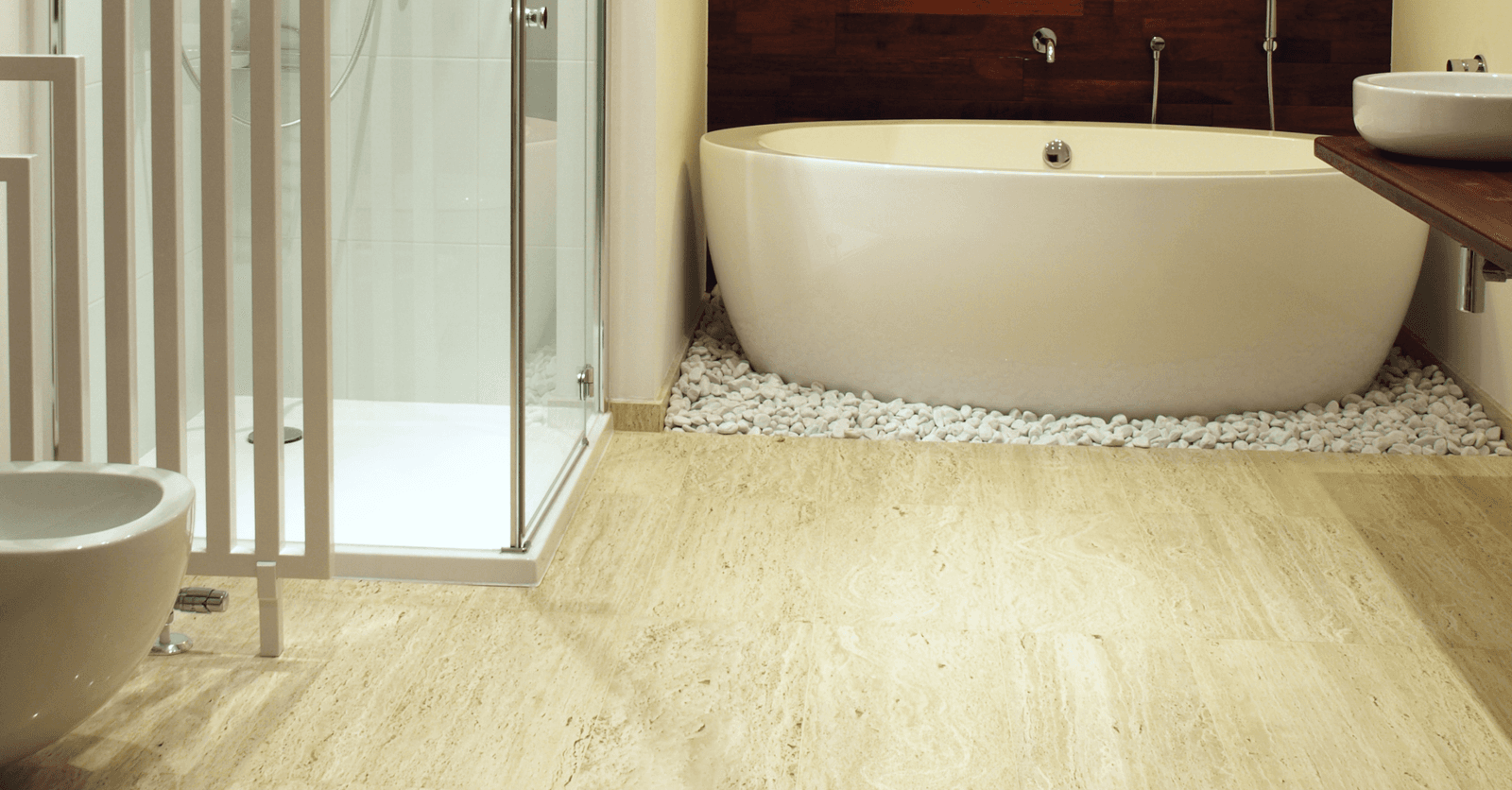
Source: Canva
Travertine, much like granite, marble, and slate, is a natural stone. It’s a sedimentary rock formed in hot springs and limestone caves, which accounts for its exceptional durability. Rooted in its provenance, it’s often referred to as limestone, cotton stone, calc-tufa, tufa, or calcareous stone.
Although this natural stone is typically white, its colouring ranges from a slew of light shades of cream, beige, grey, and pink to darker hues oscillating from ochre to brown. Travertine develops its colouring due to impurities embedded in the stone and the release of carbon dioxide. From ancient times onward, travertine has been a remarkable success. Numerous architectural feats bear witness to its resilience over time, such as the Colosseum in Rome or St. Peter’s Basilica in Vatican City. Still standing and flawless today, they’re considered some of the most stunning structures worldwide.
Much like its striking veining, which is beyond noticeable on some stones more than others, the material’s rough edges give it an authentic stamp. Travertine’s uneven texture is set in stone during its development and is showcased as tiny and irregular grooves found on the natural stone’s surface.
Nowadays, travertine stones are mainly issued from Turkish quarries. Among other things, they’re used to make indoor and outdoor tiles and slabs.
What Are the Pros and Cons of Travertine, a Natural Stone?
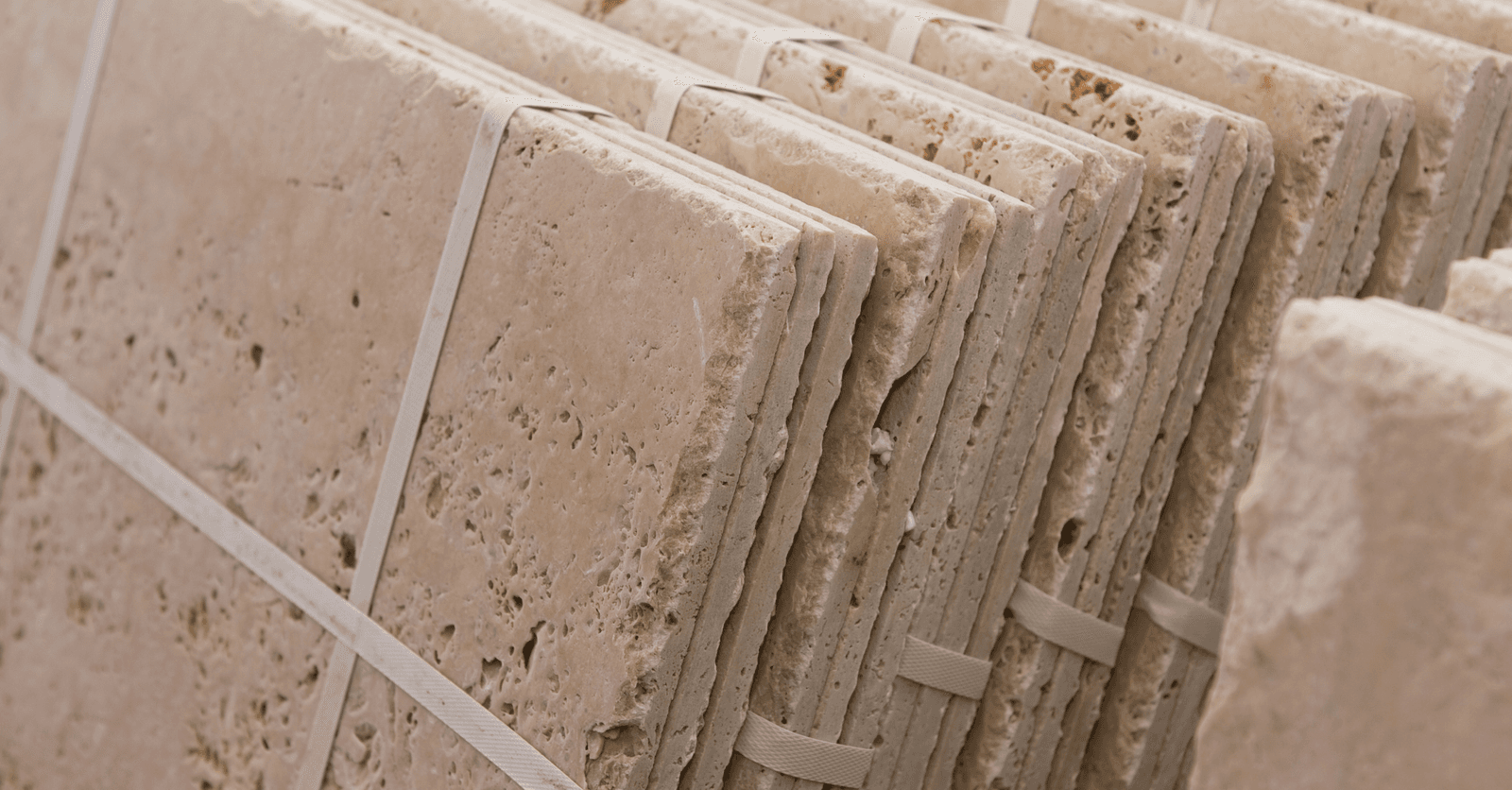
Source: Canva
Travertine is prescribed. It pairs well with many styles, whether you’re looking to recreate a Mediterranean, farmhouse, classic, cozy, rustic, or industrial aesthetic.
When it comes to travertine, its primary quality is without a doubt its versatility. It suits all rooms and elevates all architectural styles. It’s used both inside and outside, on all surfaces imaginable, beyond floors and walls.
What Is Special About Travertine?
It makes for a very resilient surface, both shock- and wear-resistant
It’s a timeless and ever-trendy stone
It comes in a stunning range of colours and sizes
It’s used inside and outside
It’s lighter than marble and granite, facilitating its installation
It has great value-based pricing
It’s low-maintenance
It’s naturally anti-slip
It allows for a slew of different types of installations
It stays cool even when sun-baked
It’s compatible with an underfloor heating system
What Is the Disadvantage of Travertine?
It has a porous surface that quickly absorbs liquids, needing a waterproofing coating every 5 years.
It’s heavier than ceramic, which can complicate the installation process, especially when using oversized tiles.
It’s sensitive to acids and harsh cleaners.
Lastly, over time, it evolves, as does its look… It appeals to some, but to others, not so much. It’s best to keep in mind its changing appearance.
Where to Install Travertine Tiles: Indoors, Outdoors, Fireplace Mantel, Kitchen Backplash?

Source: Canva
Bathroom
Travertine, whether honed or with a matte finish, is ideal in bathrooms—it’s anti-slip, low maintenance, and compatible with underfloor heating. Although, not unlike kitchens, bathrooms are humid environments where floors and walls are often exposed to a slew of different products. Yet, treating the surface against moisture, ensuring it withstands humidity and beauty products that may spill over time, is prescribed.
It’s used as flooring, wall coverings, or around the tub and shower. For example, displayed in a curbless shower, it majestically unifies the space’s texture.
Kitchen
Easy to clean, stain-proof (once treated), and shock- and heat-resistant, travertine is made for kitchens. It’s used as wall treatments and flooring, but also as a backsplash and countertop material.
Its unique look, textural details, and natural appeal are plenty to refresh just about any kitchen, whether rustic or modern. It pairs well with other materials and allows you to play around with the space’s colour scheme for a personalized result.
Living Room
Cozy to boot, travertine tiles suit all styles and colours. Its subtle elegance is beyond appealing, highlighting the space’s decoration. It works beautifully with both contrasting and monochromatic shades.
Floor and Wall Tiles
Why limit yourself to flooring when travertine creates such a stunning effect on walls?
While all tile sizes are suitable for wall installation, the most sought-after formats are, without a doubt, 15 cm by 15 cm and 20 cm by 20 cm.
How to Install Travertine Tiles
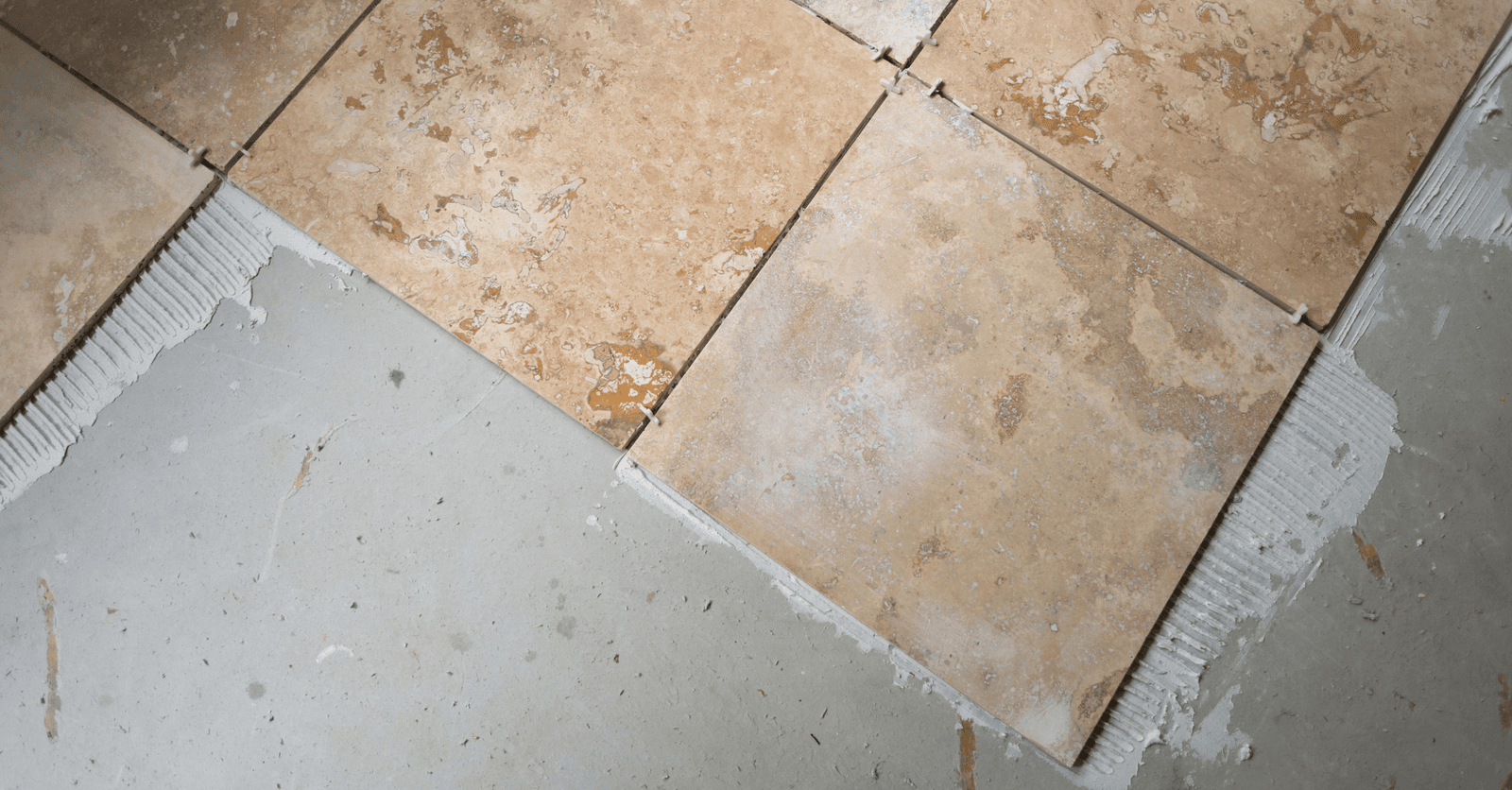
Source: Canva
Here are the key steps to laying travertine tiles, whether you’re planning on tiling with travertine yourself or supervising the work to the best of your abilities.
Tools and Materials
Selected travertine tiles
Flex Glue
Tiling grout
Tile sealer
Tile spacers
Trowel
Mixer
Wet tile saw
Sponge
Rubber float
Bubble level
Steel square
Wide square notch blade
Step 1: Gauge quantities and purchase materials
Measure the tiling surface, but buy more tiles than necessary in case one breaks when sizing it or is damaged when tiling.
Step 2: Prepare the surface
Strip back the current flooring (carpeting, vinyl tiles, tiles, etc.). Sweep the surface to ensure the glue adheres to it without a hitch.
If you’re preparing to lay travertine wall tiles, remove wall socket covers, wall plates, and wallpaper. If the wall in question is coated in paint, sand it down using 80-grit sandpaper, then wipe the surface clean using a damp rag.
Step 3: Determine the floor or wall’s midpoint
Using a bubble level and a carpenter’s square, mark the surface’s midpoint. Start tiling in the middle, moving outward, ensuring the tiles are symmetrically laid based on said starting point.
Step 4: Map out the travertine tile design
Draw the desired installation pattern directly on the floor or wall. For floor installations, you can also arrange the tiles beforehand to ensure the pattern achieves the intended result.
Step 5: Mix and apply Flex Glue
Respect the dosage quantities listed on the label, and mix the ingredients until a smooth consistency is achieved. Then, spread the glue using a trowel, working section by section. Smooth out using the square notch blade.
Step 6: Start tiling
Apply a thin coat of glue under individual tiles and glue them according to the pre-determined design. Always start in the middle of the room when tiling a floor, or the surface’s midpoint for a wall application. Lightly push down on each travertine tile using a rubber mallet to ensure it’s well embedded in the glue.
Four Travertine Waterproofing Tips
Apply the waterproofing product before the grouting compound. That way, the travertine tiles will be easier to clean and mortar residue will be easier to wipe off.
The travertine tiles must be completely dry and clean to fully absorb the sealant.
Don’t over-apply the product. If need be, remove excess with a rag.
Reapply at least every four to five years for indoor travertine surfaces and every two to three years for travertine tiles installed outdoors.
What Types of Grout Can You Use on Travertine Stone Tile Joints?
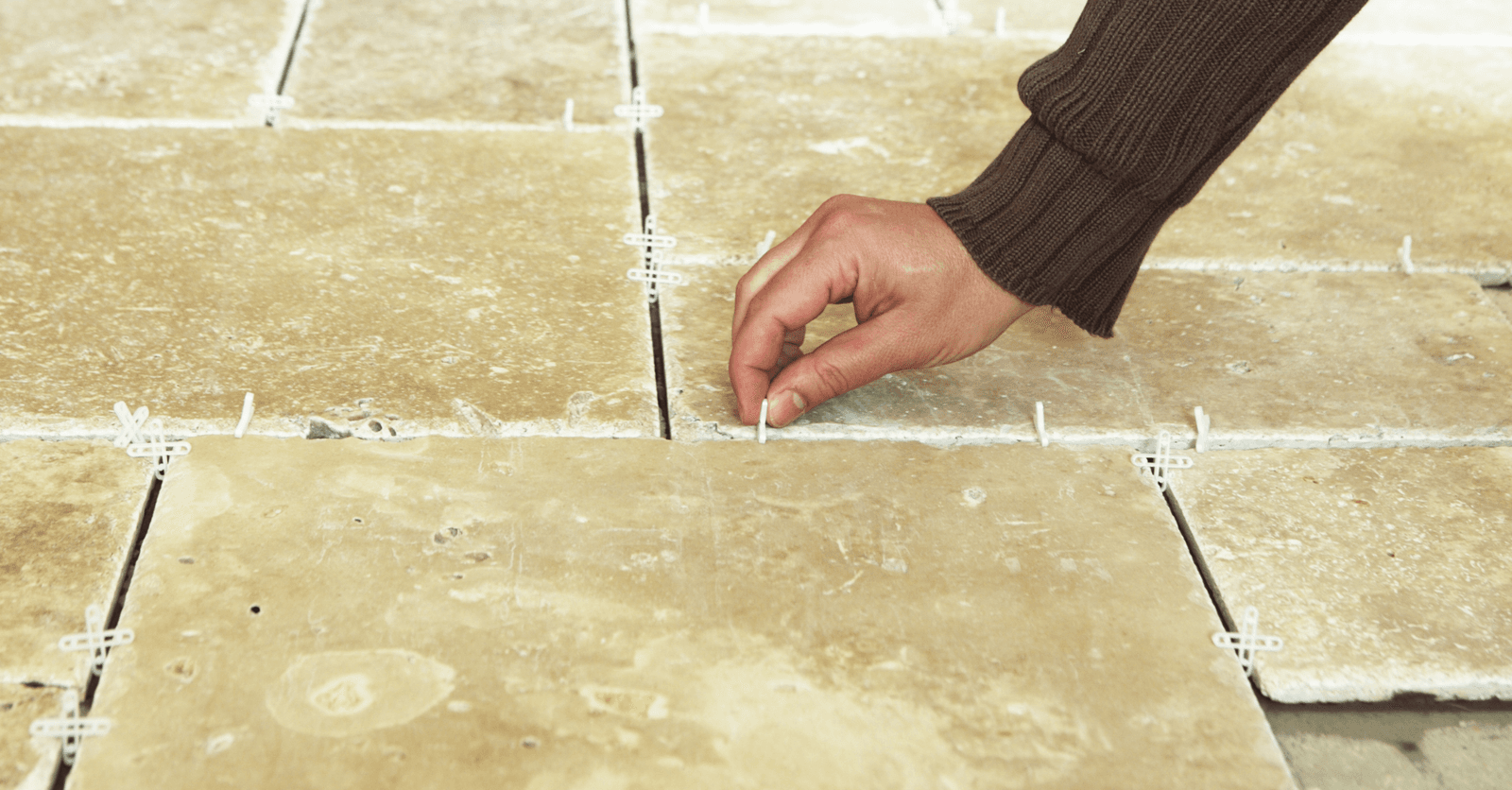
Source: Canva
Laying travertine tiles can be more complex compared to other tiling endeavours. Follow specific rules to achieve flawless results and benefit from durable flooring. If need be, hire a professional.
Here, the grout joint won’t only bind the tiles together, it'll fill in all tiny cavities for easier maintenance while maintaining the stone’s natural, nature-given rough texture.
The glue needs about 24 hours to cure. The tiles shouldn’t be grouted before the glue and the waterproofing coating are fully dry. Make regular joints using tile spacers that are removed once the grout is cured.
Apply the tile grout using a rubber float, working on a square metre surface at a time. Pay close attention to the tile’s rough texture; you may need to go back a few times to ensure the grooves are perfectly filled in.
Once the joint compound is evenly spread, excess grout is carried over to the next section. Note that wiping off any excess grout as you go is much easier and, therefore, doesn’t require reworking already grouted surfaces. Repeat this step until all travertine tile joints are filled in.
Use a damp sponge to clean the tiles. Note that while the tile’s cavities should be filled in, its rough grooves are what make travertine so appealing and should be kept as is. Wait 24 hours before thoroughly cleaning the tile to wipe clean any excess grout.
How to Clean Travertine Tile Floors, Showers, and Other Surfaces
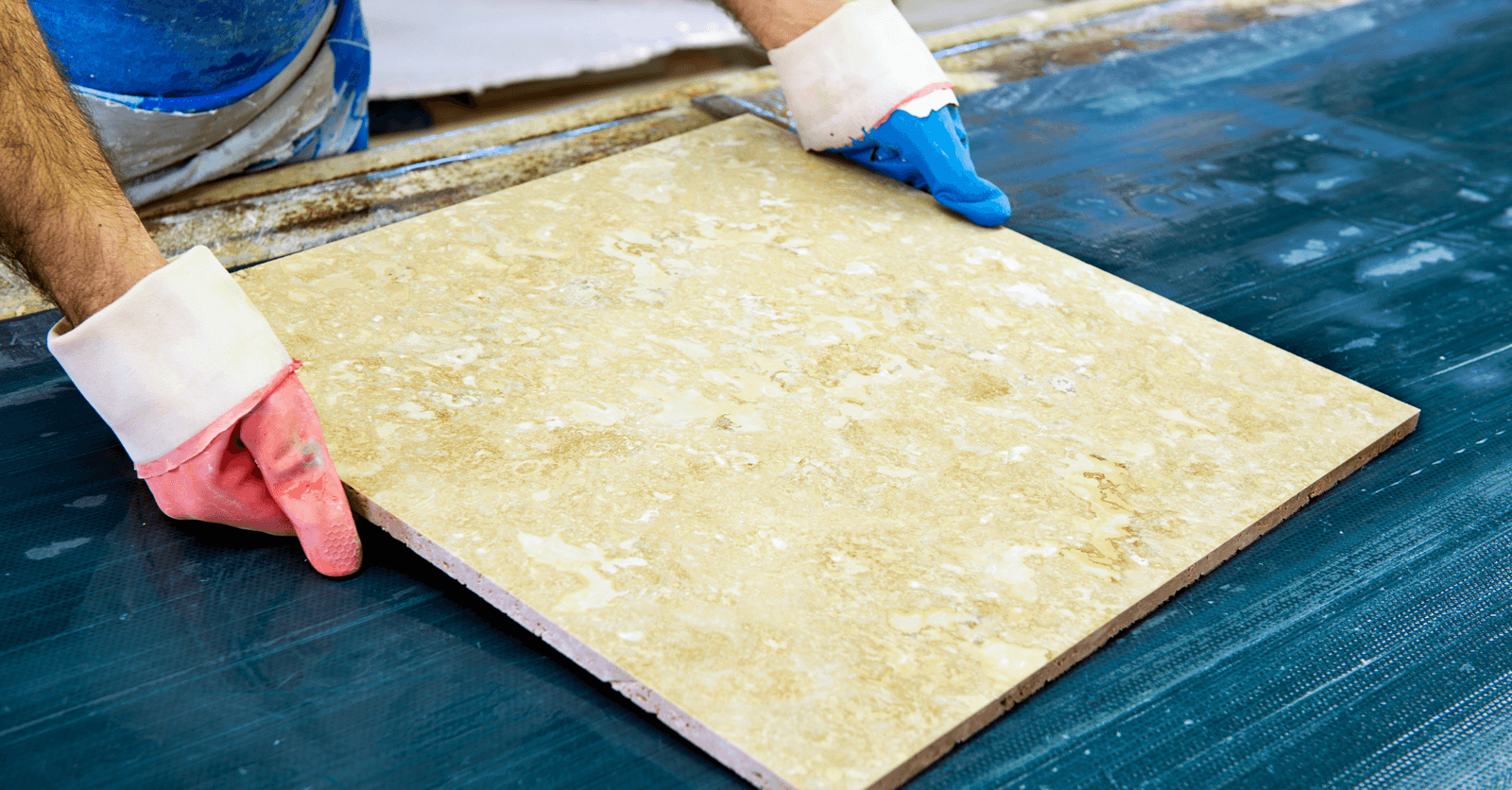
Source: Canva
There’s nothing more straightforward than a travertine tile maintenance routine. If you apply a waterproofing agent as advised, then you simply have to sweep, vacuum, and wipe the tiles down using a damp rag. However, avoid using harsh chemicals that could damage the surface.
Feel free to use water and mild soap, a neutral or slightly alkaline cleaner, or a cleaner specifically designed for natural stones. When dealing with tough stains that can’t be wiped clean using travertine tile-appropriate cleaners, sand down the tile in question and reapply a waterproofing agent.
Never clean travertine tiles using:
Products containing abrasive agents, acids, or surface-active agents like vinegar-based cleaners or scouring products
Greasy cleaners
Cleaning products with a high acid-base pH
Layer-forming products
Do Travertine Tiles Stain Easily?
Even though travertine tiles have surface-level pores, they can typically be sealed or waterproofed, whether done in the factory or during installation. As such, stains that are more likely to stand out against a tile’s lighter colouring are easier to wipe clean. Oftentimes, a quick wipe-down using a sponge is all it takes.
Travertine is practically grease stain-proof and won’t fade over time. Once installed, applying an oil- and water-repellent product for stone flooring every five years (three if installed outdoors) is paramount. Such a product will protect the tiles, preventing dirt, liquids, and oily residue from seeping into the stone, causing irreparable damage.
Is Travertine Tile Expensive?
Travertine is amongst the most affordable natural stones available. It’s accessible to all, given material range and variety. The cost of travertine varies greatly based on its size, origin, and most especially, the associated product line.
Travertine tiles can be purchased for $5.50 per square foot in hardware stores. However, high-end travertine tiles can easily go for $18–$30 per square foot, or $45 per square foot for wall tiles.
Check out this year’s tile trends.
Looking for something else?